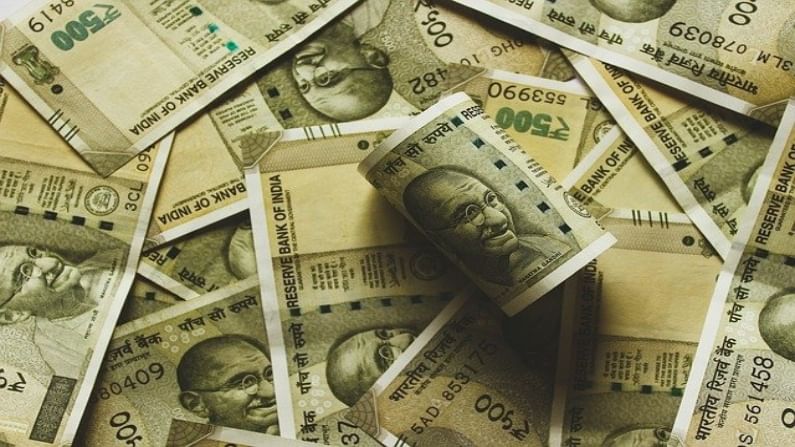Rupee may lose further ground as RBI’s bond-buying plans dent sentiment: Analysts
Analysts said that April 7's loss—wherein the rupee tumbled 105 paise to end the day at 74.47 against the US dollar—has turned the rupee into Asia's worst-performing currency so far this month
- Press Trust of India
- Last Updated : April 7, 2021, 20:02 IST

Mumbai: After logging its biggest single-day fall in nearly two years on April 7, the Indian rupee is expected to depreciate further as Reserve Bank’s plan to purchase Rs 1 lakh crore-worth government bonds in the current quarter spooked sentiments.
Analysts said that Wednesday’s loss—wherein the rupee tumbled 105 paise to end the day at 74.47 against the US dollar—has turned the rupee into Asia’s worst-performing currency so far this month.
Going forward, the domestic currency is expected to lose further ground and depreciate, they opined.
Some analysts said Reserve Bank’s plan to buy government bonds worth Rs 1 lakh crore from the secondary market during the three months ending June 2021 is considered as a quantitative easing. The purchase of bonds under the government securities acquisition programme or G-SAP could go up to Rs 3 lakh crore in the current fiscal.
The Indian rupee registered the biggest intra-day fall since August 2019 after the central bank’s announcement of buying Rs 1 lakh crore ($14 billion) of bonds in the secondary market this quarter, Dilip Parmar, Research Analyst at HDFC Securities, said.
The steep fall of the rupee also came on a day when the Reserve Bank of India (RBI) left key interest rates unchanged at record lows to support the economy amid the spike in coronavirus cases.
The decline of 105 paise is the worst single-day fall for the rupee since August 5, 2019. At the interbank foreign exchange, the Indian currency settled at 74.47, marking its lowest level since November 13 last year.
Parmar noted that the proposed liquidity infusion of RBI via the bonds programme is considered a quantitative easing from central bank which led to the unwinding of carry trades and short squeeze in USD-INR.
Rahul Gupta, Head Of Research—Currency—at Emkay Global Financial Services, said, “RBI policy was very interesting and it felt like a quantitative easing programme”.
“The forex market wasn’t expecting such a dovish stance and rupee got set on fire. The resistance in USD-INR spot has become support as RBI intervention was missing. The post-policy knee jerk reaction will simmer and the USD-INR spot will trade in between 73.50-74.50,” Gupta added.
Sugandha Sachdeva, Vice President—Commodity and Currency Research—at Religare Broking Ltd, said rising coronavirus cases in the country have created an atmosphere of lingering uncertainty, posing risks to an already fragile state of recovery.
“Besides, RBI in its monetary policy review has maintained status-quo on policy rates for the fifth consecutive meeting, amid the pressures arising from the second wave of the virus which are likely to crimp demand and hurt the domestic currency,” Sachdeva said.
Going forward, the domestic currency has near term support pegged at 74.50, while it is expected to trickle down further on the downwards trajectory in case of any breach of the same, she noted.
At the post-policy press meet on Wednesday, RBI Deputy Governor Michael D Patra said it was mindful of the liquidity situation and “we will be mindful of taking a balanced action”.
“To begin with, for the first in history, RBI is committing its balance sheet to the monetary policy under which we are committing to the market that we will give you Rs 1 lakh crore each quarter (up to Rs 3 lakh crore this fiscal), whether you want it or not, and irrespective of the market movement we will give you that amount of liquidity through the G-SAP,” he said.
Primus Partners CEO Nilaya Varma said RBI has moved to flatten the yield curve by looking at sucking out short term liquidity using mechanism like variable rate reverse repo and also announcing G-SAP 1.0 to stabilise long term rates. “This will help keep cost of borrowing low especially for government,” Varma added.
Download Money9 App for the latest updates on Personal Finance.
Related
- Top 25 Best Selling Cars in the US Q1 2025 Ford Leads Tesla Holds, and Sedans Make a Comeback
- Vegan vs Non-Vegetarian: Which Diet Is More Nutritious and Better for Your Health?
- होंडा ने हेडलाइट समस्या को ठीक करने के लिए वापस मंगवाई CB300R मोटरसाइकिलें
- RBI ने लगातार दूसरी बार रेपो दर में कटौती की, कर्ज होंगे सस्ते
- Tata Motors की वैश्विक थोक बिक्री चौथी तिमाही में 3% घटकर 366177 इकाई
- सुरक्षा मानदंडों को पूरा करने की बढ़ती लागत की वजह से दाम बढ़ा रही हैं कार कंपनियां

